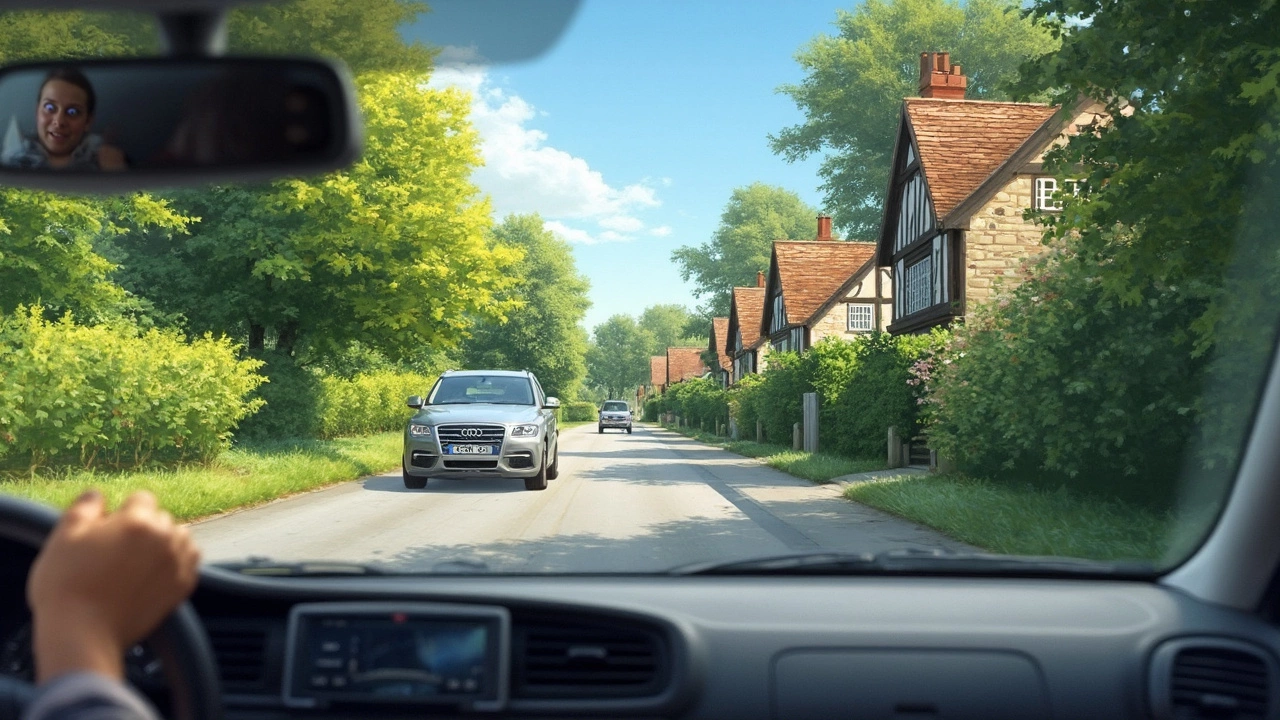Defensive Driving for HGV Drivers: Practical Tips to Keep You Safe
If you spend most of your day behind the wheel of a heavy goods vehicle, defensive driving isn’t just a buzzword – it’s a daily habit. It means watching the road, anticipating what others might do, and reacting in a way that avoids accidents. Below are simple, proven steps you can start using right now.
Know Your Vehicle and Its Limits
Large trucks handle differently from cars. They need more distance to stop, and blind spots are bigger. Before you set off, check tyre pressure, brakes and load security. A well‑maintained truck reacts predictably when you need to brake or steer away from danger.
When you load your trailer, spread the weight evenly. An uneven load shifts the centre of gravity and can make the truck tip in tight corners. Double‑check that cargo is strapped down so it won’t move if you need to brake hard.
Stay Alert and Anticipate Others
Defensive driving starts with eyes on the road and mind on the future. Scan ahead at least 15 seconds – that’s roughly the distance you travel at 50 mph in that time. Look for brake lights, pedestrians near crossings, and slow‑moving vehicles that could cause a pile‑up.
Use your mirrors frequently, not just when changing lanes. Check the left‑hand mirror for traffic merging onto the motorway and the right‑hand mirror for cyclists who often ride close to the curb. If something feels off, give yourself extra space.
Speed is your biggest enemy. Stick to the posted limits and adjust for weather, traffic and road conditions. A few extra seconds of stopping distance can be the difference between a close call and a crash.
Plan Your Route and Take Breaks
Know the roads you’ll travel before you leave the depot. Look for rest areas, weigh stations and places where you can pull over safely if you feel tired. Fatigue is a silent danger for HGV drivers – a short break every two hours can keep your reaction time sharp.
If you’re driving at night, keep your headlights clean and use high‑beam only when there’s no on‑coming traffic. Nighttime glare can hide obstacles, so reduce speed and stay extra cautious.
Communicate Clearly
Signals are your language on the road. Use your turn indicators well before changing lanes, and flash your headlights to warn other drivers of hazards such as sudden stops or road works. A quick wave can also let a fellow driver know you’re giving way.
When you’re stuck behind a slower vehicle, don’t tailgate. Keep a safe gap and consider using the overtaking lane only when it’s legal and safe. Patience prevents aggressive driving, which is a major cause of accidents.
Practice Regularly
Even experienced drivers benefit from a refresh. Take a short defensive‑driving course or watch a video that shows real‑life scenarios. Practicing emergency braking in a safe area can build confidence in how your truck stops at the last moment.
Remember, every mile you drive is an opportunity to protect yourself, your cargo and other road users. By mastering these defensive‑driving habits, you become a safer HGV driver and set a good example for the whole industry.
- July 21 2025
- 0 Comments
- Rowan Cavendish
Most Critical Factor for Driving: Focused Attention on the Road
Is skill enough behind the wheel, or is something else more important? Discover the one crucial factor that keeps every driver safe.
- March 27 2025
- 0 Comments
- Rowan Cavendish
How Long Does It Take to Get a Defensive Driving Certificate?
Getting a defensive driving certificate can be a swift process with courses designed to fit various schedules. While some finish the course in a day, others take longer due to flexible online options. Factors like location, course format, and the certifying organization's requirements influence completion time. Whether for insurance reduction or personal safety improvement, understanding the timeline helps manage expectations and plan accordingly.
- March 22 2025
- 0 Comments
- Rowan Cavendish
Is Defensive Driving Truly Driving to Save?
Defensive driving is more than just a buzzword; it's a crucial skill set aimed at reducing accidents and saving lives. By learning to anticipate potential road hazards and adjusting driving styles accordingly, drivers can significantly lower their risk on the road. This article breaks down the core principles of defensive driving, from maintaining situational awareness to mastering safe following distances. It also explores the financial benefits, like potential insurance discounts and reduced vehicle wear and tear.
- January 12 2025
- 0 Comments
- Rowan Cavendish
The Essential Guide to the 12-Hour Driving Course in Virginia
The 12-hour driving course in Virginia is a critical step for drivers seeking to improve their road safety skills. This course offers essential defensive driving techniques and knowledge, especially for those who need to reinstate their driver's license or lower their insurance rates. Participants will learn about various driving laws, how to handle different driving conditions, and the importance of maintaining a defensive mindset on the road. By the end of the course, drivers will feel more confident and better prepared to face the challenges of driving on Virginia's roads.
- Driving Lessons (41)
- Driving Test Tips (33)
- HGV Training (31)
- Driving Test Booking (27)
- Driving Licence Renewal (24)
- Driving Theory Test (21)
- Intensive Driving Course (16)
- Pass Plus Course (15)
- Driving Tips (15)
- Driver Licensing (14)
Categories
- January 2026 (4)
- December 2025 (15)
- November 2025 (13)
- October 2025 (21)
- September 2025 (5)
- August 2025 (8)
- July 2025 (30)
- June 2025 (30)
- May 2025 (30)
- April 2025 (31)
- March 2025 (30)
- February 2025 (28)
Archives
- driving lessons
- driving test
- driving tips
- intensive driving course
- driving test tips
- HGV training
- learn to drive
- driving theory test
- driver training
- driving test booking
- pass driving test
- HGV driving
- road safety
- driving license renewal
- Virginia driving test
- learner drivers
- safe driving
- Virginia driver's license
- driving license
- learning to drive




